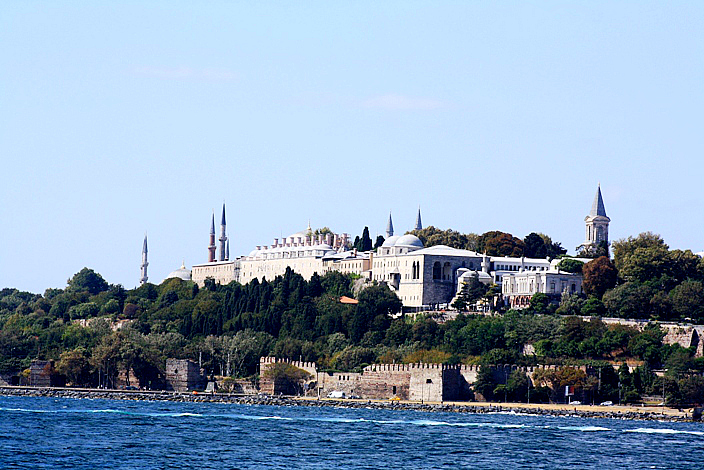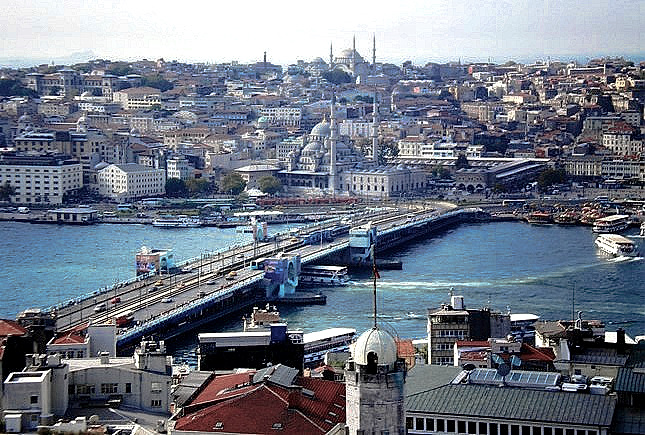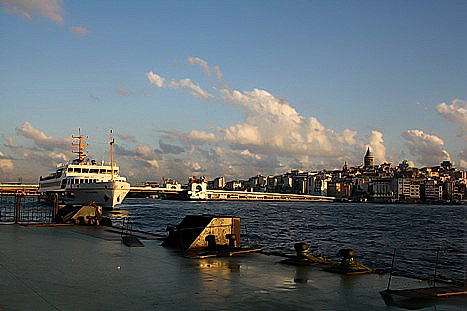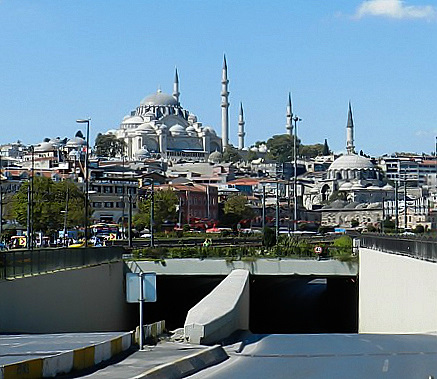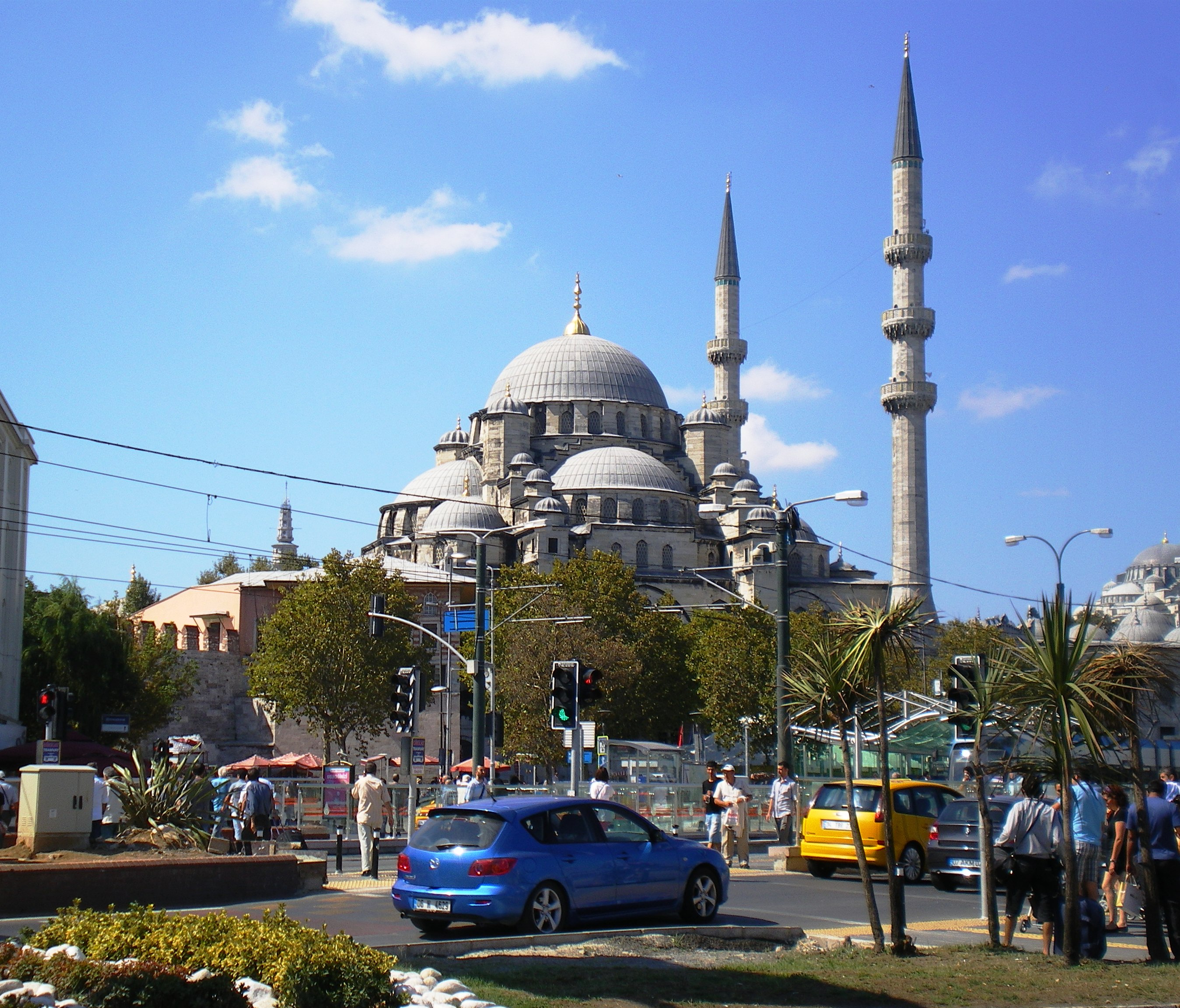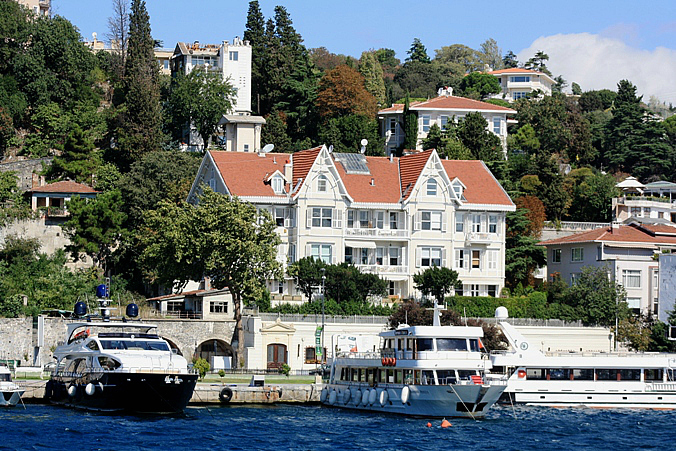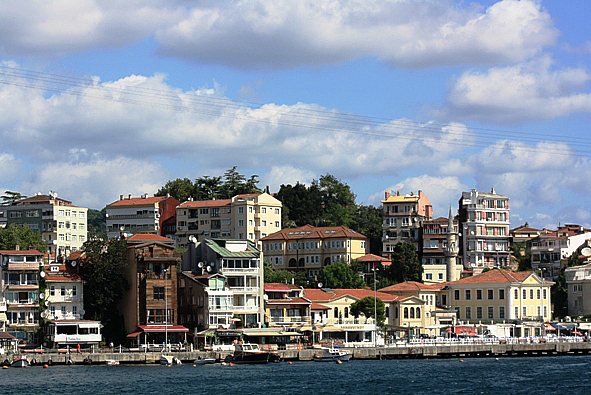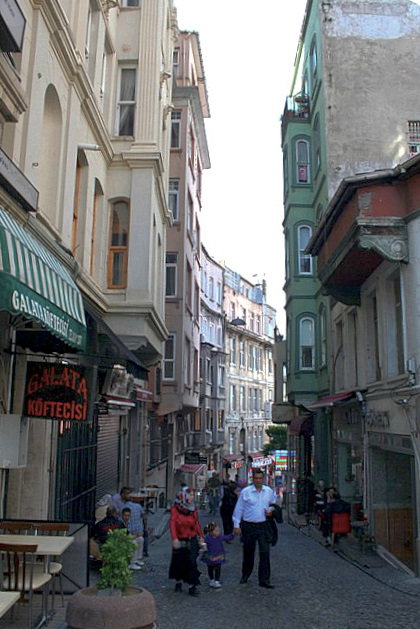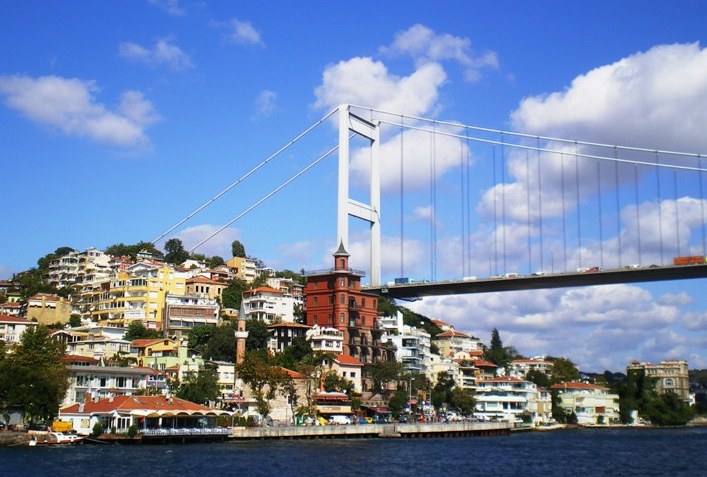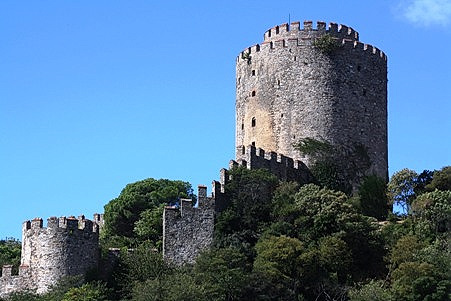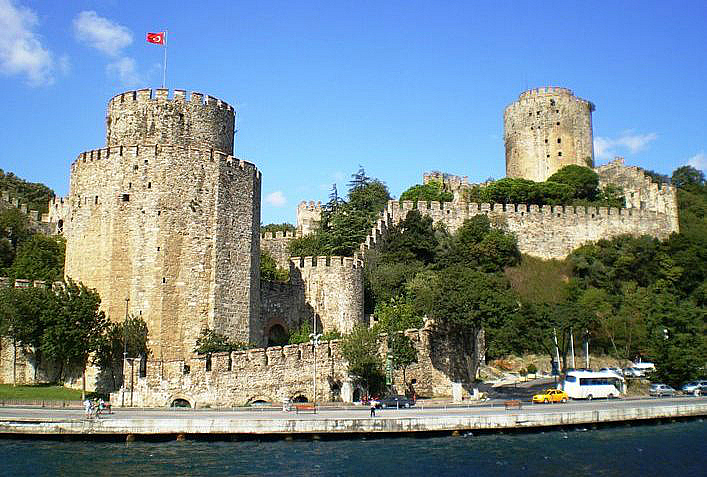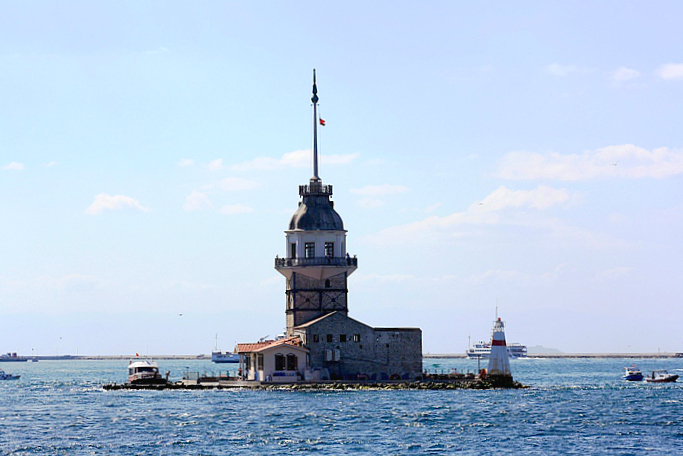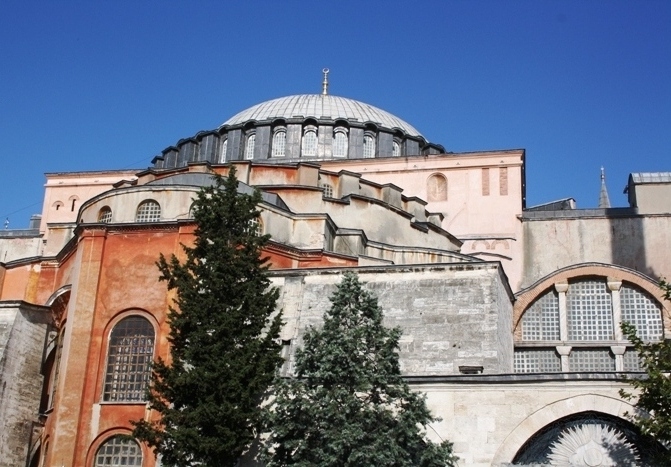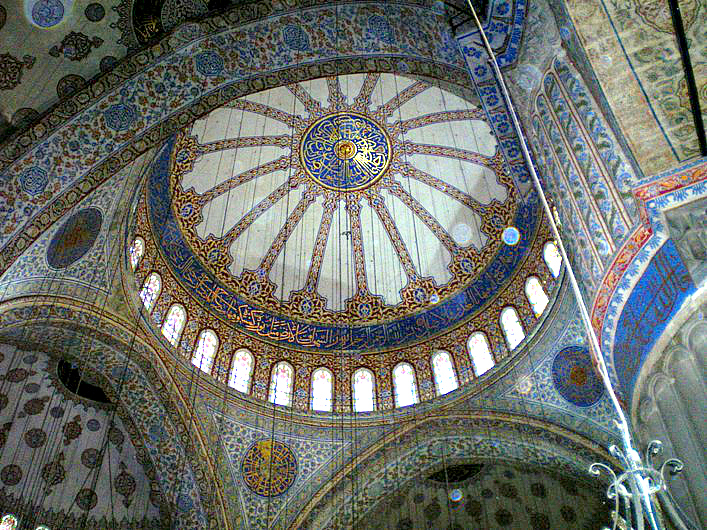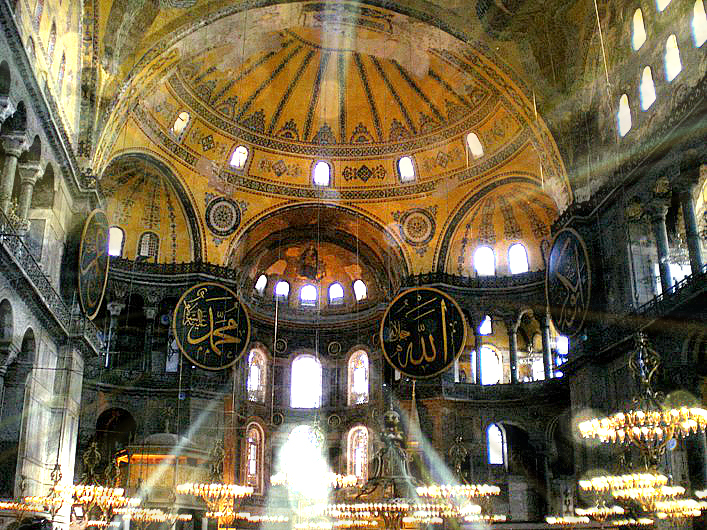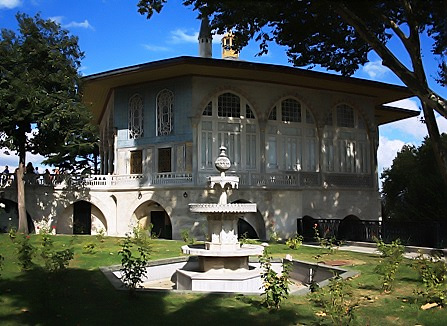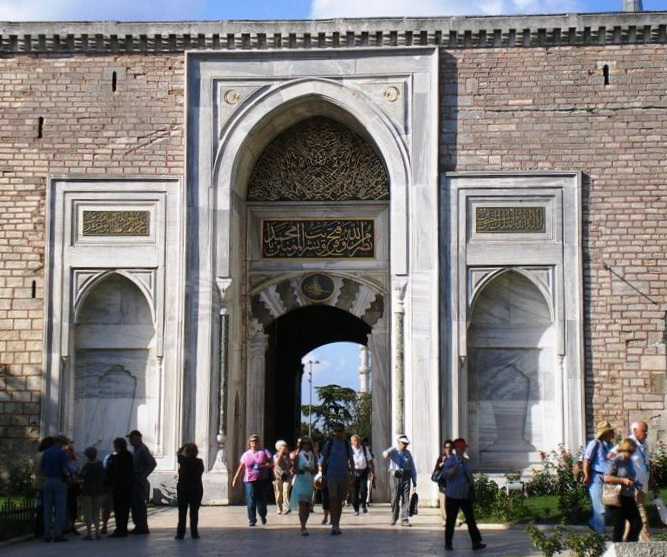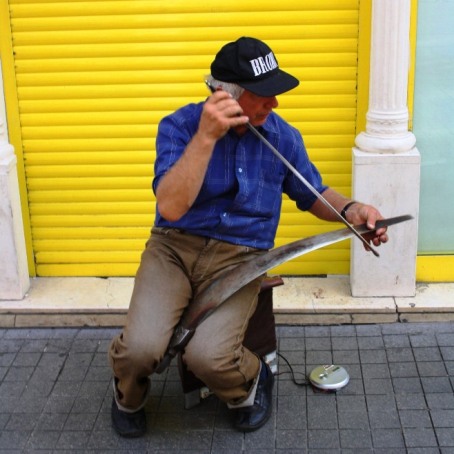
Istanbul has been formed by water. Historic Istanbul of Byzantium & Constantinople sits on the European landmass, separated from its
more recent sprawl in Asia Minor by the Bosphorus. The old European halves of the Fatih and Beyoglu districts are themselves separated by the Golden Horn
inlet. Much of the Asian side of the Bosphorus functions as a suburb of the economic and commercial centers in European Istanbul, where most of
the interest lies.

The Bosphorus is the conduit from the Black Sea into the coveted trade routes of the Mediterranean which explains Istanbul's historic prominence - as does its straddling of Europe and Asia and its Christian & Islamic history. A western-influenced city dominated by huge mosques where a cheap haircut and shave with a cut-throat razor can be had in an old fashoned barber shop opposite a booze outlet, where eastern bazaars thrive in the same city as the funky, fashionable and crowded Iskital Avenue of westernised boutiques. It's all a part of Istanbul's unique character.
While the city has over 14 million inhabitants and is spread over 5,300 square kilometres the main attractions are concentrated in the Fatih and Beyoglu districts and are readily navigable on foot, by tram, cab and ferry.
Beyoglu, on the north bank of the Golden Horn was the base for Genoese and Venetian merchants during the 13th century. It's been through ups and downs including the eviction of its Greek population during the Cyprus conflict of the 1950s-1960s. Its most prominent landmark is the medieval stone Gelata Tower high on the skyline from which to get a panoramic view of the historic peninsular.
Genoese fortifications were largely demolished in the 19th century, leaving only the Galata Tower, to make way for northward expansion of the city. Gelata is now a part of the Beyoglu district, which forms Istanbul's commercial and entertainment centre. The Tower, Iskital Avenue, Taksim Square and the grand old palaces on the Bosphorus are the main drawcards whereas the old history is on the other side of the Golden Horn in the Fatih distict.
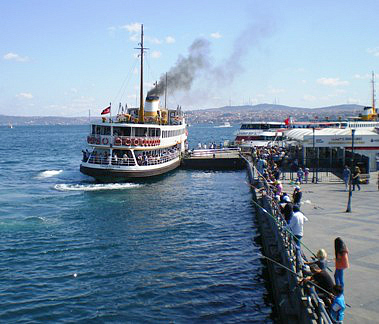
Fatih holds most of the historical treasures and the hyperactive buzz of the Grand Bazaar and Spice Bazaar (aka the Egyptian Bazaar). The Topkapi, Hagia Sophia, Blue Mosque, Hippodrome and Basilica cistern are all within a casual stroll of each other. The waterfront is close by, the streets are full of eateries and Beyoglu is accessible by tram, cab or even on foot if you're keen so Fatih is the logical place to stay. The somewhat boutiquish Hotel Neorion is a stand out. Ideally situated with great views from it's rooftop terrace, excellent service and comfortable if a bit squeezy facilities it rightfully gets great reviews. Recommended by The Ruins.
The prosperous Bospherus. Lined with converted palaces, fancy apartments and impressive old government edifices. The habitat of the Turkish moneyed set Nice neighbourhoods along the Bosphorus would not look out of place in any wealthy western city.
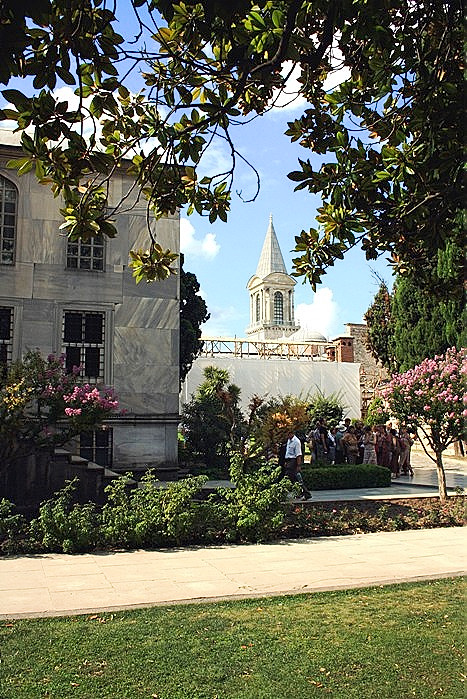
The centre of the Ottoman Empire from 1459 until the mid 1800s when later sultans decided that some jazzy digs down on the water's edge would be more in line with their westernising tastes.
The palace complex consists of four main courtyards and buildings that, at their peak, were home to 4,000 people. The fourth courtyard includes the Circumcision Room dedicated to the circumcision of young princes. BTW - I don't recommend the calamari rings at the Palace's cafe. The Palace has been the home of some interesting characters during its life as the centre of the Ottoman empire. Sultan Ibrahim 1 "The Mad" (circa 1615) was likely the most colourful. Locked in a cage until his succession as sultan at 23, as was apparently the custom for sultan's sons (those that weren't murdered by their fathers as a means to control who took over), The Mad could likely retrosepctively claim child abuse as a defence for his bizzare behaviour. Maddy had performance issues with his harem of 280 concubines. He was also a Chubby Chaser - his favourite consort was a 150kg Armenian heifer, Sechir Para ("Sugar Cube"). He found her (as if she'd be hard to miss) after having a cow's girl-parts cast in bronze and having minions and flunkies search the empire for a woman who was equally blessed. Sugar Cube was mis-named. Following a bit of her spiteful gossip Maddy had all of his other concubines tied in sacks and tossed into the Bosphorus.
Istanbul has its museums and art galleries but for a single visit these sites supplemented with backstreet explorations and a ferry on the Bosphorus will capture the essence of old Istanbul.
